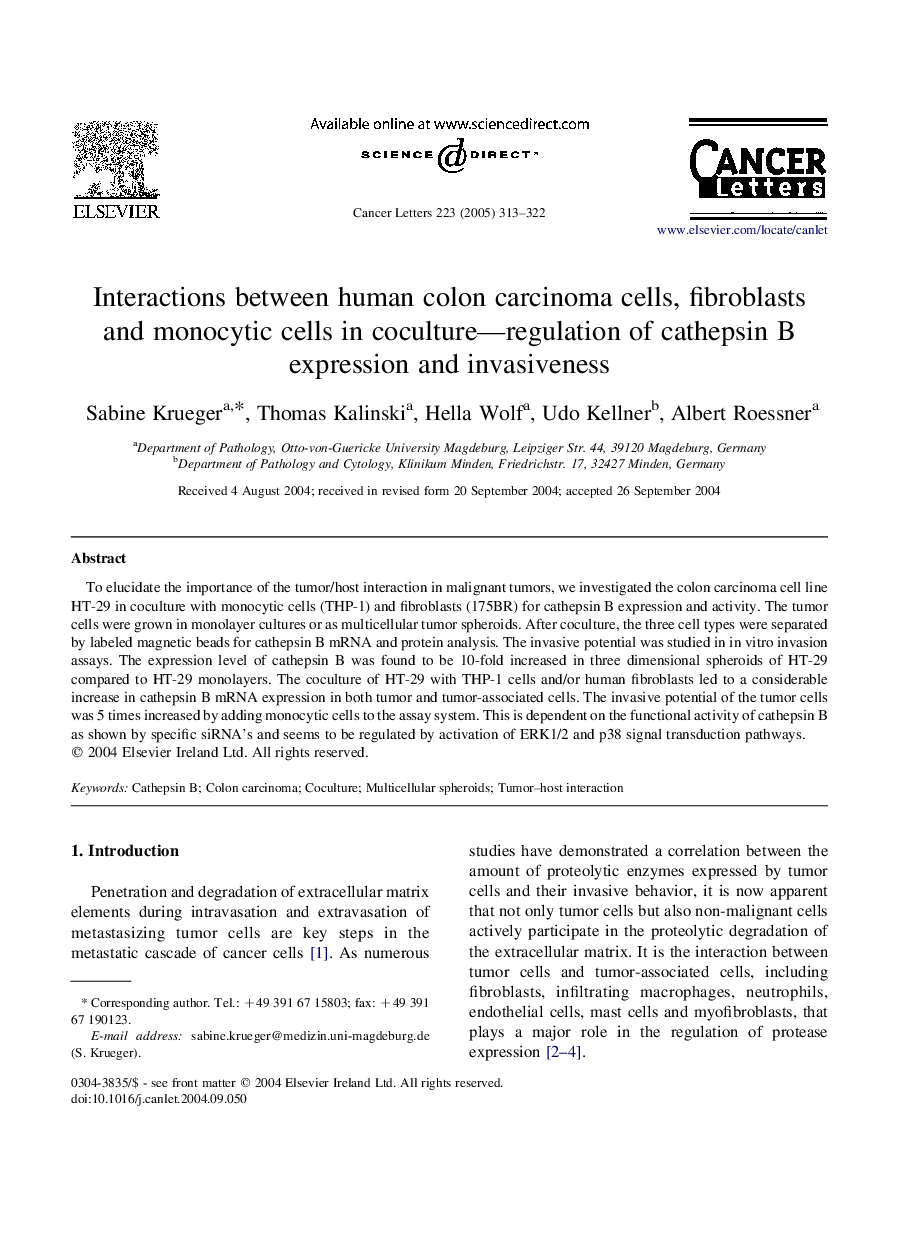| Article ID | Journal | Published Year | Pages | File Type |
|---|---|---|---|---|
| 10900236 | Cancer Letters | 2005 | 10 Pages |
Abstract
To elucidate the importance of the tumor/host interaction in malignant tumors, we investigated the colon carcinoma cell line HT-29 in coculture with monocytic cells (THP-1) and fibroblasts (175BR) for cathepsin B expression and activity. The tumor cells were grown in monolayer cultures or as multicellular tumor spheroids. After coculture, the three cell types were separated by labeled magnetic beads for cathepsin B mRNA and protein analysis. The invasive potential was studied in in vitro invasion assays. The expression level of cathepsin B was found to be 10-fold increased in three dimensional spheroids of HT-29 compared to HT-29 monolayers. The coculture of HT-29 with THP-1 cells and/or human fibroblasts led to a considerable increase in cathepsin B mRNA expression in both tumor and tumor-associated cells. The invasive potential of the tumor cells was 5 times increased by adding monocytic cells to the assay system. This is dependent on the functional activity of cathepsin B as shown by specific siRNA's and seems to be regulated by activation of ERK1/2 and p38 signal transduction pathways.
Related Topics
Life Sciences
Biochemistry, Genetics and Molecular Biology
Cancer Research
Authors
Sabine Krueger, Thomas Kalinski, Hella Wolf, Udo Kellner, Albert Roessner,
